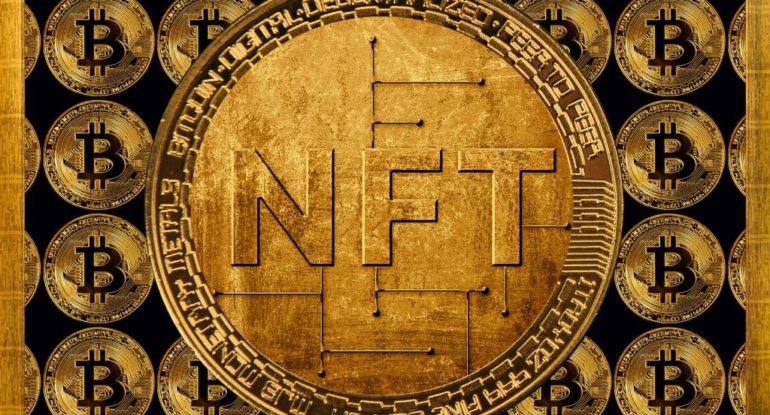Are NFTs Environment Friendly? NFTs Carbon Footprint Analysis

How much would you pay for a one-of-a-kind piece of artwork? Some collectors believe the upper limit is in the hundreds of millions of dollars. What about a work of art that doesn’t have a physical form and simply exists as a digital token no more “real” than a JPEG file? Welcome to the odd world of crypto art collectibles, often known as non-fungible tokens or NFTs.
NFT Explained In 5 Minutes – Non-Fungible Token
NFTs (non-fungible tokens) are cryptocurrencies, just like Bitcoin. However, unlike bitcoins, which all have the same value, NFTs are more akin to baseball cards. Each token has a particular value and cannot be exchanged for goods. Instead, they exist as digital representations of artworks, songs, videos, and games, among other things, on your computer.
NFTs have been around since 2017 when CryptoKitties became the first major experiment in crypto-collectibles. Back then, the average cost of one of these kitty cards was around $60. But that’s a drop in the bucket compared to the present take. A single digital image’s rights were recently auctioned for US$69.3 million (£50.2 million). CryptoPunk 7804 (a poorly drawn extraterrestrial with a hookah) fetched $7.5 million at auction. For US$500,000, a house on Mars was acquired. That is a digital house, not one where you might dwell. Jack Dorsey, the CEO of Twitter, just sold his first tweet as an NFT for a little under $3 million.
“However, how can someone buy a tweet?” you might wonder. After all, anyone may click on the tweet as many times as they want, look at it, print it out, and frame it.
When you purchase an NFT, you are purchasing a one-of-a-kind certificate of ownership stored on a blockchain, an immutable distributed database. In most circumstances, you own little more than bragging rights because the artwork’s artist owns the copyright. The costs of developing (or “minting”) your NFT files (about US$100 as I write this) are also likely to be passed on to you by the creators.
The majority of the time, you’ll also be liable for a massive carbon footprint.
Also, read – You Don’t Want to Miss These NFT Drops in 2022
Estimating the Carbon Cost of NFTs
NFTs consume a lot of energy because they rely on a blockchain. The majority of creators continue to use Ethereum, a blockchain that uses a proof-of-work methodology similar to Bitcoin. Mining is a computational function that uses a lot of energy. Expert mining computers take turns guessing the digital lock’s combination (a long string of random digits).
The computer that successfully predicts the combination receives a payout in Ether, a cryptocurrency. The competition continues as the digital lock resets every 15 seconds. Ethereum consumes over 31 terawatt-hours (TWh) of electricity every year, around the same as Nigeria.
Calculating how much responsibility the NFT industry should bear for Ethereum’s carbon emissions is exceptionally challenging. NFTs or no NFTs, Ethereum was going to run. However, as the demand for digital art grows, NFT buyers and sellers are becoming responsible for a more significant portion of Ethereum’s total energy use, prompting some artists to reconsider.
Joanie Lemercier, a French digital artist, recently canceled six works after calculating the energy costs. The sale would consume enough electricity to power the artist’s whole studio for two years in just ten seconds.
ArtStation, a portfolio-sharing service for digital artists, just launched an NFT marketplace. However, after an overwhelming outcry on social media within hours of announcing the scheduled debut, ArtStation was forced to abandon the project.
Alternative technologies exist that allow NFT markets to operate without the carbon burden. Because these transactions take place on a more centralized platform with lower prices (and carbon footprints), sidechains consume very little energy to process NFTs.
The Currency Project, a series of NFTs by Damien Hirst, will be released utilizing the Palm sidechain. Hirst will continue to take Bitcoin as payment; therefore, his NFTs may still have a significant carbon footprint.
Take Artistic Licenses with Artistic Solutions
NFT proponents say that the growing popularity of blockchain technology, along with its ravenous hunger for energy, provides incentives for switching electricity systems from fossil fuels to renewables. The airline industry has made similar arguments: people should fly more, not less, to support efficiency breakthroughs that could make aviation greener.
This strategy is unlikely to work for NFTs, according to the evidence. However, because of the competitive nature of proof-of-work mining, expanding NFT markets are incentivizing the development of stable coal-fired power plants so that crypto miners do not have to rely on intermittent renewable energy.
Using carbon offsets, some NFT producers are attempting to have their crypto-cake and eat it as well. Purchasing carbon offsets pays for conservation efforts. Each credit represents one tonne of carbon saved, either kept in a tree or potentially stopped from escaping into the atmosphere through industrial innovation. Offset sells carbon credits to offset emissions created by NFT transactions and provides an emissions calculator.
Nifty Gateway, an NFT marketplace, recently auctioned off eight carbon net-negative NFTs that were “inspired by Earth and the climate issue.” The artworks were given a total of 60 carbon credits. Each offset was an NFT in and of itself.
Carbon credits based on NFTs (or any carbon credits for that matter) are based on creative accounting. Like NFTs on a blockchain, the notion that carbon can be immutably hidden away in trees indefinitely. It’s impossible. According to Nifty’s website, offsets make sense for neutralizing our inevitable emissions “after we’ve made all attainable efforts” to decrease our carbon footprint.
Is it, however, necessary to get bragging rights to a digital image that anyone with an internet connection can enjoy as part of one’s carbon footprint?


























































